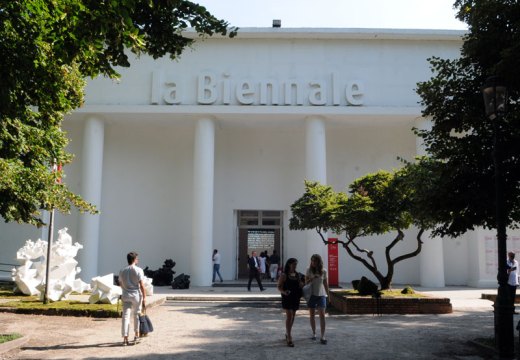‘Politics and art are not separate fields between which a momentary connection is established,’ wrote Kalle Hamm and Dzamil Kamanger, curators of the recent Mänttä Art Festival in Finland. ‘Art always has a political dimension and vice versa.’
Although Mänttä was dogged by accusations of censorship and the alleged non-payment of artists, it at least managed to generate debate. In September, the curators took part in a lively discussion organised by Frame, the Finnish equivalent of the British Council. In some ways, the issues here are universal: despite being more popular – some would say populist – than ever before, the contemporary art world remains anxious that it might be excluding the under-privileged or otherwise marginalised. What can such a narrow art form really say about politics? ‘Contemporary art is a very elitist sphere,’ admitted Frame’s head of programmes Taru Elfving, ‘and it could be so much more. That’s something that breaks my heart.’
Both the Venice and Istanbul biennials have shown art’s increasing desire to engage with politics. Now so are numerous exhibitions across the Baltic region. Last week’s Pixelache festival of art and activism took over various spaces throughout Helsinki. At Stockholm’s Magasin III, ‘Like A Prayer’ (until 13 December) questions the importance of hope at times of crisis. Sørlandets Kunstmuseum in Norway is showing Mark Boulos’ All That Is Solid Melts into Air (until 15 November). And Fiona Tan explores emigration, globalisation and identity at the National Museum of Norway in Oslo (until 31 January 2016).
One man for whom art and activism are inextricably linked is Ai Weiwei. Last week Ai was in Helsinki for the opening of the freshly revamped Helsinki Art Museum (HAM). His arrival – rolling deep with a sizeable entourage – rather dominated proceedings at the media view. His work, unfortunately, remains tricksy but underwhelming. Elsewhere in the museum, two video installations by Finnish artists-of-the-moment IC-98 (whose Venice Biennale work I covered in May’s Diary) are simultaneously lush and beautiful and darkly unnerving. The permanent collection of Finnish modern and contemporary art has been well served by pastel-hued accent walls, while a street-facing project space offers a valuable resource in a city low on exhibition opportunities for emerging artists. The space opens with Vieno Motors, an art-florist by Ilona Valkonen that expands on work she showed at SINNE last year.
For a city of just half a million people, Helsinki already has a lot of public museums. So what is the city-funded HAM adding? According to director, Maija Tanninen-Mattila, the aim of the museum – situated along with shops and a cinema inside the distinctive white Tennispalatsi building – is to ‘connect to people who don’t normally go to exhibitions’. HAM will be ‘an easy-going museum experience,’ she tells me. The branding is brilliant, while several of the temporary exhibitions are free – a rarity in Helsinki. On the way in, Post-it note suggestions for visitors strike an entertainingly provocative note. For example: ‘Spend the longest time looking at the piece you feel is most boring or annoying.’
If the well-connected Ai Weiwei is at one end of the political spectrum, then the other was found inside Kiasma as part of Jani Leinonen’s ‘School of Disobedience’ (until 31 January 2016). At the media view, Leinonen had enlisted two Romany women to sit on the floor of the gallery. The pair sat beneath a work called Anything Helps (2009–15), a series of signs collected from homeless people across the world, gilt-framed and mounted on the wall. I’m told by a press officer at the museum that the two women, Lidia Curcanin and Garofita Marinin, were paid ‘something’ by Leinonen ‘for them to be like a living performance’.
As in the UK, the Syrian refugee crisis is dominating public discussion. While some perceive a threat to security, others only want to reach out and help. Last time I was in Stockholm, a tailor complained to me that Finland never takes its ‘fair share’ of immigrants. This time, Juha Sipilä, Finland’s Prime Minister, has offered to host refugees in his home.

Anything Helps (2009–15), Jani Leinonen, with Lidia Curcanin and Garofita Marinin. Photo: Finnish National Gallery / Pirje Mykkänen
But Romany refugees have long been a frequent sight outside Helsinki central station, and they are often ignored. Inside the gallery, it is impossible simply to walk past – or at least it is for me. I try to talk to them, but my lack of languages gets in the way. I can’t help but think of Christoph Büchel’s mosque for the Iceland pavilion at Venice this year. Judging by the rest of Kiasma’s retrospective, I’m not sure Leinonen has the same nuance of thought as Büchel. But I still can’t work out if this is a genuine act of openness or a cruel, exploitative stunt?
Either way, I’ve never felt such an emotional punch in an art gallery. There is distaste at the reduction to spectacle of real human plight, but also a forced encounter with a very human reality – right there in front of your eyes. There is frustration, and sorrow, and a deep, visceral, shame. They are watching as you are watching. As with the refugee emergency, a question arises: what is your response?
Unlimited access from just $16 every 3 months
Subscribe to get unlimited and exclusive access to the top art stories, interviews and exhibition reviews.


















![Masterpiece [Re]discovery 2022. Photo: Ben Fisher Photography, courtesy of Masterpiece London](http://www.apollo-magazine.com/wp-content/uploads/2022/07/MPL2022_4263.jpg)
What happens when an artist wants to be anonymous?